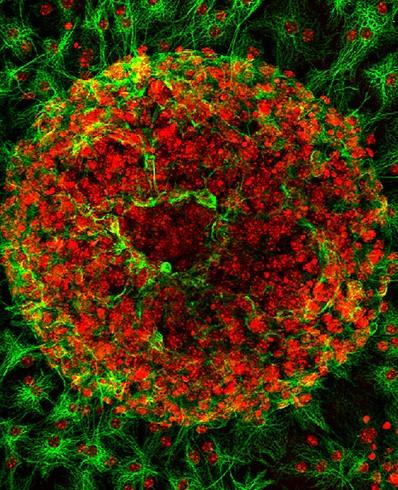
Members of the Duke Neurology Department contributed to 12 new peer-reviewed journal articles published this August. Highlights include a review article examining evoked potentials used for deep brain stimulation in Parkinson’s, the healthcare received by veterans with epilepsy, the optimal stroke treatments for patients with cerebral venous thrombosis, and other topics. Read the paragraphs below for summaries of the articles written or co-written by members of our Department this month and find links to the original articles themselves.
Epilepsy, Sleep, and Clinical Neurophysiology
- Aatif Husain, MD, was the senior author of a new study that examined the association of utilization of care with mortality in U.S. veterans with drug-resistant epilepsy (DRE). Compared to the general population with DRE, veterans with DRE had higher rates of mortality. The team also found that better utilization of comprehensive epilepsy care, diagnostic services, and medications were each associated with reduced mortality. Read the full story in JAMA Neurology.
- A new narrative review examines the current evidence on whether obstructive sleep apnea (OSA) is associated with postoperative delirium and postoperative cognitive dysfunction and examines possible mechanisms that predispose OSA to these disorders. Andrew Spector, MD, contributed to this article, which appears in the Canadian Journal of Anesthesia.
Multiple Sclerosis and Neuroimmunology
- Senior author Chris Eckstein, MD, as well as medical students James Giarraputo, MD, and Mega Gupta, MD, contributed to a Journal Club article for Neurology that discusses neurofilament light chain levels in anti-NMDAR encephalitis and primary psychiatric psychosis. Read that article here.
Neurodegeneration and Neurotherapeutics
- Despite significant investment and a large public health need, prevention trials for Parkinson’s disease have yet to show any significant successes. Andrew West, PhD, contributed to an essay outlining one path that may help: cohorts of individuals genetically at risk for Parkinson’s disease. Read that essay in Neurology.
Neurocritical Care
- Michael “Luke” James, MD, was the senior author of a new study that outlines a technique for In vivo single microglial cell isolation after intracerebral hemorrhage in mice. This method could allow us to better understand the cellular mechanisms underlying brain injury and repair and translate future potential therapeutics for intracerebral hemorrhage into effective treatments. Medical student Jay Lusk contributed to the article, which appears in Neuroscience Letters.
Memory Disorders
- A new study connects hallmarks of the aging brain with the emergence of Alzheimer’s disease-related pathology and suggests that corpora amylacea may act as a compensatory factor that becomes depleted with advancing tau burden. John Ervin and Shih-Hsiu Jerry Wang, MD, PhD, contributed to the study, which appears in Acta Neuropathologica Communications.
Neuromuscular Disease
- Richard Bedlack, MD, PhD, was the senior author of the 66th article in the ALSUntangled series, which reviews alternative and off-label treatments for people living with amyotrophic lateral sclerosis (ALS). The most recent article examines the potential for mycobacterium avium subspecies paratuberculosis as a potential cause for some types of ALS, as well as the potential for antimycobacterial antibiotics as potential therapy. Read that article in Amyotrophic Lateral Sclerosis and Frontotemporal Degeneration.
- Neurofilament heavy (NEFH) is a critical protein required for the formation of the neuronal cytoskeleton; polymorphisms this protein are also a possible cause sporadic ALS (sALS). Richard Bedlack, MD, PhD was also part of a study that investigated this hypothesis. The team found that 9 and 10 motif length in candidate tetranucleotide (TTTA) repeat in NEFH may have a protective advantage for potentially lowering the risk of sALS and delaying the age of disease onset. Read the full article here.
Parkinson’s and Movement Disorders
- Kyle Mitchell, MD, contributed to a review article examining the general features, mechanisms, technical recording factors, and clinical applications of brain evoked potentials generated by deep brain stimulation for Parkinson's disease. Read that article in the latest issue of Brain Stimulation.
Stroke and Vascular Neurology
- Brian Mac Grory, MB BCh, MRCP, was the senior author of a new systematic review and meta-analysis that sheds light on the most effective stroke treatments for patients with cerebral venous thrombosis. Mac Grory and colleagues examined the existing literature for the efficacy and safety of direct oral anticoagulants (DOACs) versus vitamin K antagonists for these patients. Their review suggests that in patients with cerebral venous thrombosis, DOACs, and warfarin may have comparable efficacy and safety while highlighting the need for additional study. Read that article in Stroke.
Translational Brain Sciences
- Microporous annealed particle (MAP) hydrogels are porous 3D scaffolds generated by interlinking randomly packed microgels with the potential to help repair tissue damage after stroke and other conditions. Tatiana Segura, PhD, was the senior author of an article demonstrating a new method for reproducibly controlling the amount of empty “void space” within these hydrogels, allowing greater insight into the mechanical properties, diffusion of macromolecules, and cell responses to those hydrogels. Read the full article in Acta Biomaterialia.
- Simon Gregory, PhD, contributed to a new article that expands our understanding of the processes that regulate mitochondrial DNA mutations. The team investigated the effects of two known nuclear genome mutagens, cadmium and Aflatoxin B1, on germline mtDNA mutagenesis in Caenorhabditis elegans. Their findings suggest mitochondria harbor additional previously uncharacterized mechanisms that regulate mtDNA mutational processes across generations. Read the full article in Nucleic Acids Research.